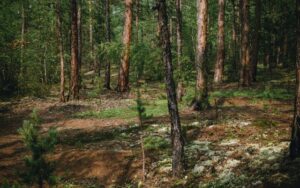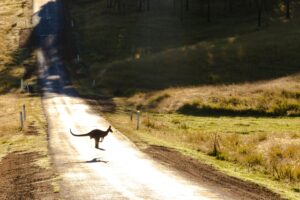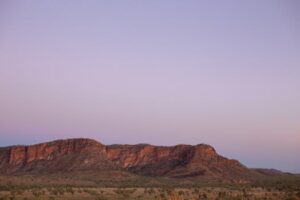⏱️ 5 min read
Survival in the wilderness requires more than just luck and determination. Whether stranded in a dense forest, isolated desert, or frozen tundra, understanding fundamental survival principles can mean the difference between life and death. The ability to adapt, think clearly under pressure, and apply essential survival skills creates a foundation for enduring even the most challenging environments.
The Rule of Threes: Understanding Survival Priorities
Every survival situation demands proper prioritization of needs. The Rule of Threes provides a framework for understanding what matters most: humans can survive approximately three minutes without air, three hours without shelter in harsh conditions, three days without water, and three weeks without food. This hierarchy guides decision-making when resources and time are limited.
Temperature regulation stands as the most immediate concern after breathing. Hypothermia can set in within hours in cold, wet conditions, while hyperthermia poses equal danger in extreme heat. Securing or creating shelter should take precedence over searching for food, as the body can function for extended periods without nutrition but rapidly deteriorates when core temperature drops or rises beyond safe limits.
Creating Effective Shelter in Various Environments
Shelter construction varies dramatically based on terrain, climate, and available resources. In forested areas, a lean-to shelter using branches, leaves, and debris provides quick protection from wind and precipitation. Position the opening away from prevailing winds and ensure the roof angle allows water to run off rather than pool.
Desert environments require different approaches. Shade becomes paramount during daylight hours, while nighttime temperatures can plummet. A below-ground shelter or one utilizing rock formations helps maintain more stable temperatures. In snowy regions, a properly constructed snow cave or quinzhee offers remarkable insulation, with interior temperatures significantly warmer than outside conditions.
Essential Shelter Components
- Insulation from ground moisture using branches, leaves, or grass
- Wind protection through strategic positioning and material selection
- Waterproof covering when possible using bark, large leaves, or packed snow
- Size appropriate to conserve body heat without excessive energy expenditure during construction
- Location away from hazards like dead trees, flood zones, or animal trails
Locating and Purifying Water Sources
Water remains critical for survival, yet consuming contaminated water can prove fatal. Understanding where to find water and how to make it safe for drinking represents essential knowledge. In most environments, following terrain downhill leads to water sources. Look for convergence points where animal tracks meet, as wildlife regularly travels to drinking locations.
Natural indicators help identify water presence. Lush vegetation, swarms of insects, and bird flight patterns at dawn and dusk often point toward water. In arid regions, dry stream beds may contain water just below the surface. Digging in the lowest point of a bend can sometimes reveal underground moisture.
Water Purification Methods
Boiling remains the most reliable purification method, killing pathogens when water reaches a rolling boil for at least one minute (three minutes at higher altitudes). Without fire, solar water disinfection involves filling clear plastic bottles and exposing them to direct sunlight for at least six hours, allowing UV radiation to neutralize harmful organisms.
Natural filtration through layers of sand, charcoal, and cloth removes visible particles but does not eliminate all pathogens. This method improves water clarity and should be combined with other purification techniques when possible. Certain plants like cattails indicate cleaner water sources, though all wild water should be treated before consumption.
Fire Starting Without Modern Tools
Fire provides warmth, water purification, signaling capability, and psychological comfort. Mastering multiple fire-starting techniques ensures success even when primary methods fail. The bow drill method, while physically demanding, reliably generates ember-forming friction using readily available materials: a curved branch for the bow, cordage, a spindle, a fireboard, and a socket.
The hand drill requires less equipment but demands greater technique and endurance. A straight spindle rotates rapidly between the palms against a fireboard until friction creates enough heat to form a glowing ember. Fire plough and bamboo fire saw methods work in specific environments where appropriate materials exist.
Fire Preparation Steps
- Gather tinder materials: dry grass, bark shavings, or plant down
- Collect kindling: small twigs and sticks no thicker than a pencil
- Prepare larger fuel wood in graduated sizes
- Create a wind-protected fire site cleared of flammable debris
- Position materials for easy access during the critical ember-to-flame transition
Finding Food in Wilderness Settings
While food represents a lower immediate priority than shelter and water, sustaining energy levels becomes important for extended survival situations. Foraging for edible plants offers the safest, most energy-efficient option. However, plant identification requires careful study, as many toxic species closely resemble edible varieties. The universal edibility test provides a systematic approach but takes approximately 24 hours per plant.
Protein sources include insects, which offer remarkable nutritional value with minimal risk. Grasshoppers, crickets, and beetle larvae are generally safe when cooked. Fishing and trapping conserve energy compared to active hunting, allowing caloric intake to exceed expenditure. Simple snares placed along game trails can capture small mammals, while improvised fishing methods include spear fishing, hand lines, and fish traps.
Navigation and Rescue Signaling
Understanding basic navigation prevents wandering in circles and helps maintain direction toward potential rescue or civilization. The sun rises in the east and sets in the west across all locations. At night in the Northern Hemisphere, locating Polaris (North Star) provides reliable directional reference. Moss growth patterns, while popular in survival lore, prove unreliable as moisture and shade affect growth more than direction.
Signaling for rescue increases discovery chances dramatically. Three of anything—fires, rock piles, whistle blasts—represents the universal distress signal. Creating contrast with the environment makes signals visible from the air: dark materials arranged on snow, light materials on dark ground. Reflective surfaces like mirrors or metal can signal aircraft from miles away when angled to catch sunlight.
Wilderness survival ultimately depends on knowledge, adaptability, and mental resilience. Practicing these skills before emergency situations arise builds muscle memory and confidence, transforming theoretical understanding into practical capability that could preserve life when it matters most.






















